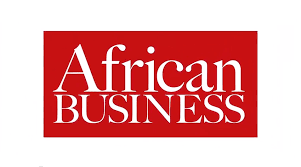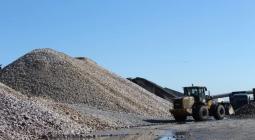As critical minerals gain importance, Standard Bank eyes investment in DRC and Zambia

Africa’s biggest lender, Johannesburg-based Standard Bank, has expressed ambitions to increase investment in the Democratic Republic of Congo (DRC) and Zambia as it seeks to position itself as an early leader in two markets rich in natural resources critical to the world’s green transition.
Kenny Fihla, the CEO of Standard Bank’s corporate and investment banking division, said earlier this week that “because of the energy transition, we need to think differently about our businesses in the DRC and Zambia… we are likely to see that, in the next five years or so, the DRC will be one of the most important countries within the Standard Bank group.”
“It’s about where the minerals needed to drive the transition will come from – that’s going to change completely the composition of our portfolio,” he noted.
The DRC and Zambia have emerged as crucial African markets because of the abundance of natural resources available in both countries that are essential to the production of green technologies. The DRC is home to almost half of the world’s cobalt, for example, which is a critical mineral for electric vehicle (EV) batteries.
Both the DRC and Zambia are also in the top five largest exporters of copper in the world. It is likely there will be higher demand for the commodity in the years to come as it is central to the production of renewable energy systems.
Energy transition takes centre stage
M’khuzo Mwachande, an investment banker in South Africa, tells African Business that “in the boardrooms of today, there’s hardly a discussion that doesn’t revolve around the energy transition and sustainable finance offerings, which are central to our sustainable future.”
Mwachande believes Standard Bank’s announcement implies a strategic decision to bet on the potential lucrative returns on the commercial and investment banking activity associated with the mining industry in the DRC and Zambia – particularly in the realm of sustainable finance.
“The sustainable finance landscape has been rapidly evolving, with the global market growing at an impressive 9% compound annual growth rate. Foreign banks have been at the forefront of pioneering sustainable financial products like green bonds,” he says. “Notably, African giants such as Standard Bank have also now set ambitious targets to undertake sustainable finance transactions north of R250bn ($13bn) by 2026. And the announcement is perhaps an indication to show that they are working towards their set goal.”
Mwachande believes that there is plenty of opportunity for banks to make strong returns on such products, not least because both the DRC and Zambia still need to develop the infrastructure that they require to become more established as global commodity hubs.
“An important part of the energy transition issue is that Africa still needs the infrastructure to facilitate it: we’re lagging behind on about $150-170bn in infrastructure financing,” Mwachande says.
“There is an opportunity here for banks to supply loans so that the DRC and Zambia can develop the basic infrastructure, such as roads, that is needed for the two countries to export enough commodities for the global energy transition,” he argues. “Sustainability-focused financial products could help companies in the DRC and Zambia to further drive this transition.”
Standard Bank appears to have come to the conclusion that these conditions represent a significant opportunity, with the South African lender potentially poised to play a role financing the development of the DRC and Zambia’s mining industries as demand for their commodities ramps up.
Mwachande is “very optimistic that the benefits will outweigh the risks” and believes that other pan-African banks could also seek to establish a greater presence in these markets as the energy transition gains pace.
Image : GustavsMD









